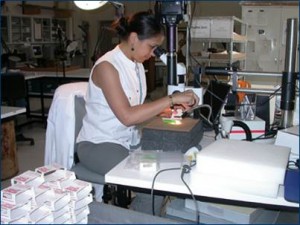Identification of pests found within your institution is the first crucial step in solving the problems that these invaders can cause. Proper identification will give you important information about what foods they eat, what environmental and harborage conditions they prefer, how long they live and other key biological clues.
How To Identify Pests:
- Check our Pest Fact Sheets – A sortable and filterable resource with information targeted to what you need to know
- Search our Image Gallery – A reference gallery of pest images for use for identification and in training. Images can be uploaded for sharing with this group.
- Go to our Identification Resources – A list of additional printed reference sources that may be useful for pest identification
- View our Web Resources – A list of web resources for pest identification
- Consult our Bibliography – Materials referenced in the pest fact sheets
- Consult the PestList Community – join here
By starting with the biology of your potential pests, you are better equipped to map out an IPM plan to eliminate or reduce them without the use of harmful chemicals. In certain situations, a slight change in humidity or temperature can cause the pests to leave or die. Knowing what food the identified pest eats will help identify which collection items are most at risk. Knowing how and where they reproduce can allow you to remove the breeding areas. All of this information will help your cause in eliminating pests while protecting people and collections.
